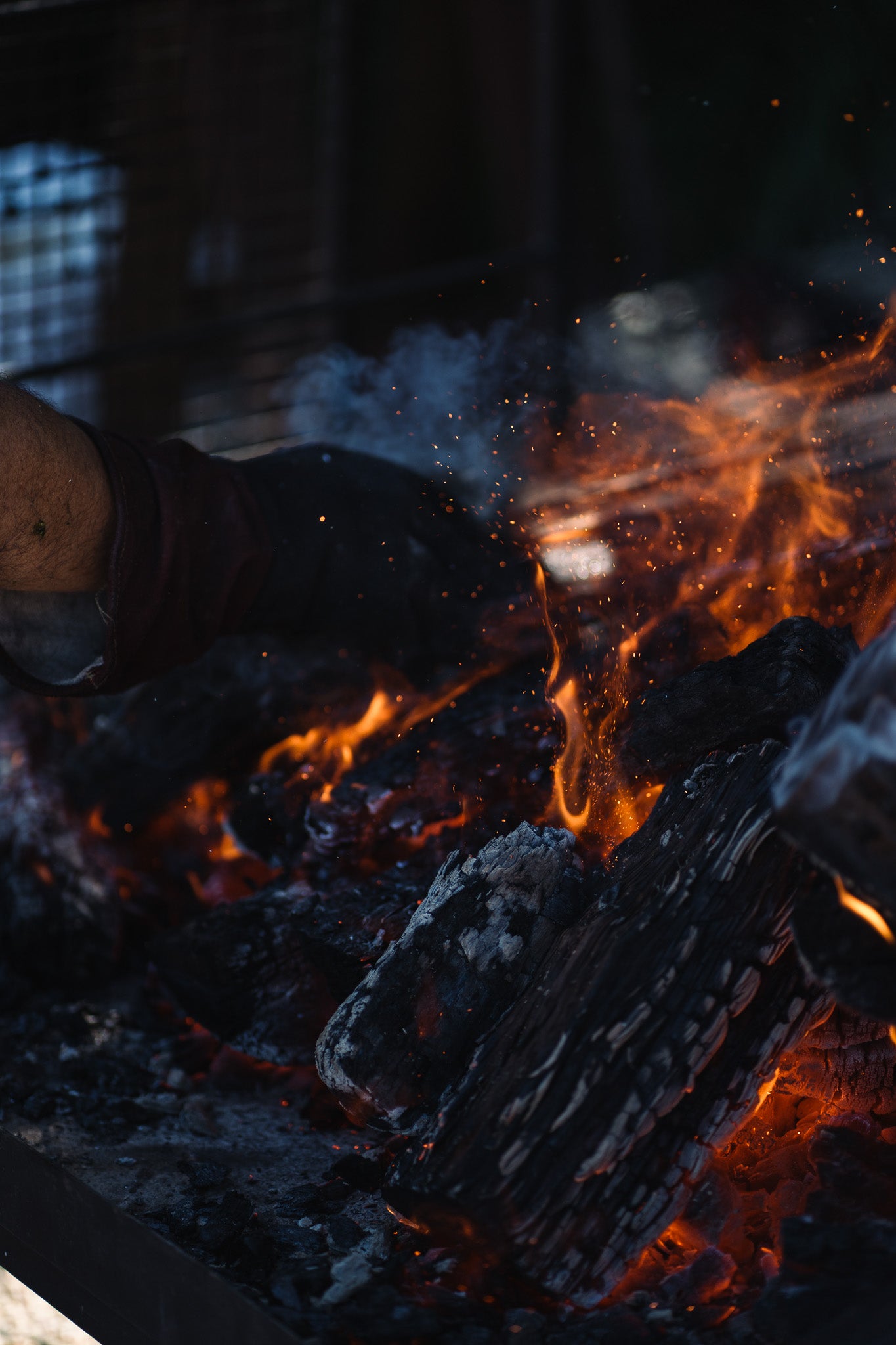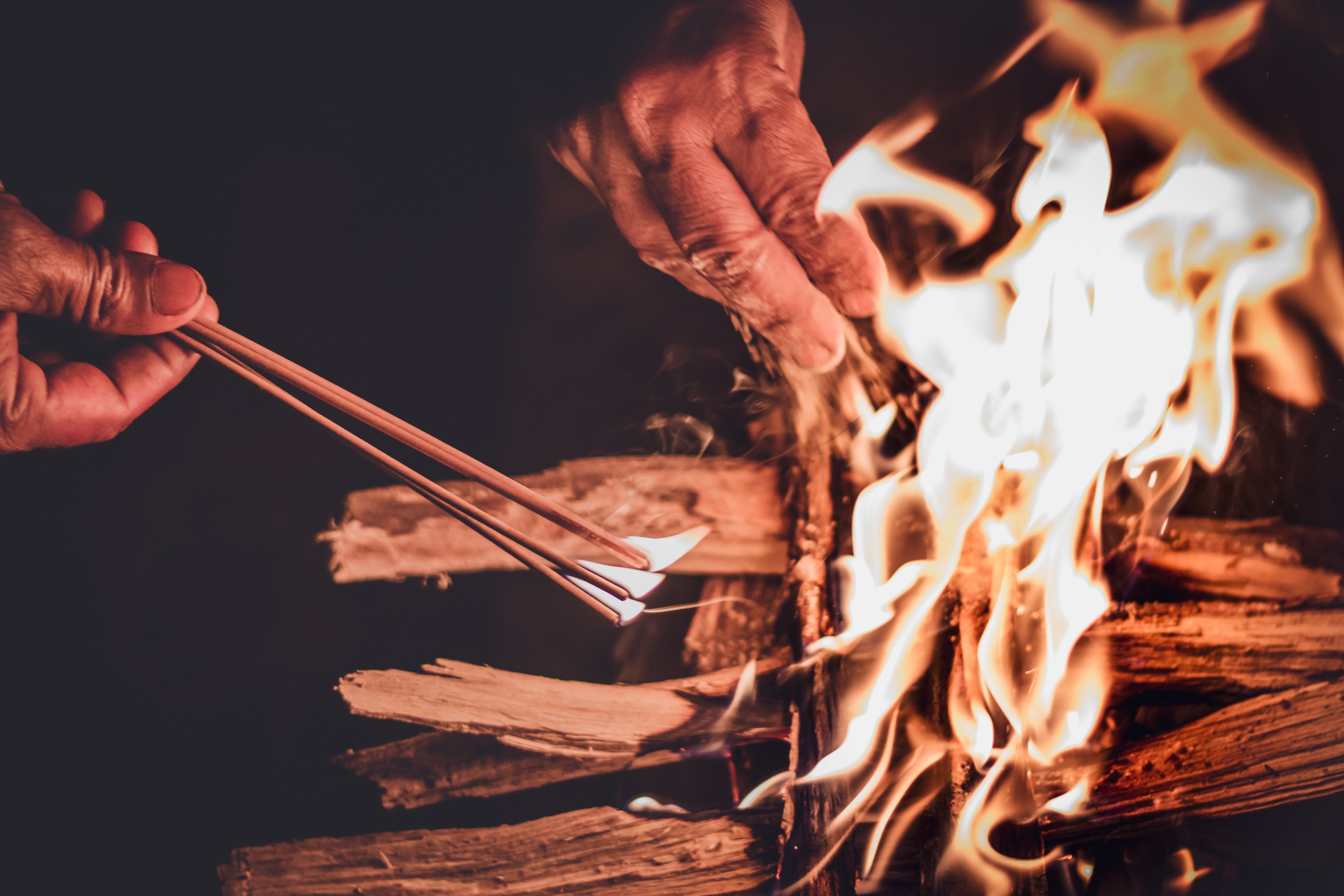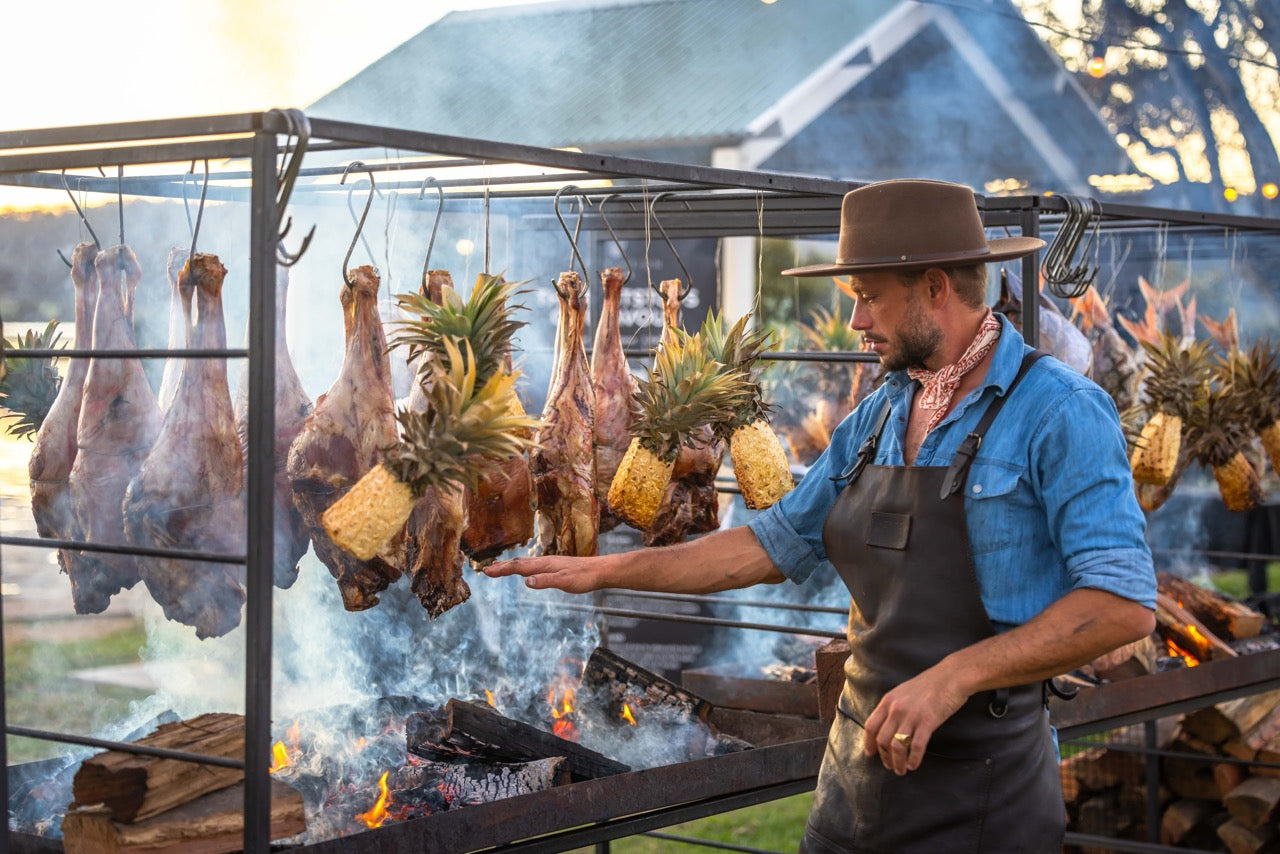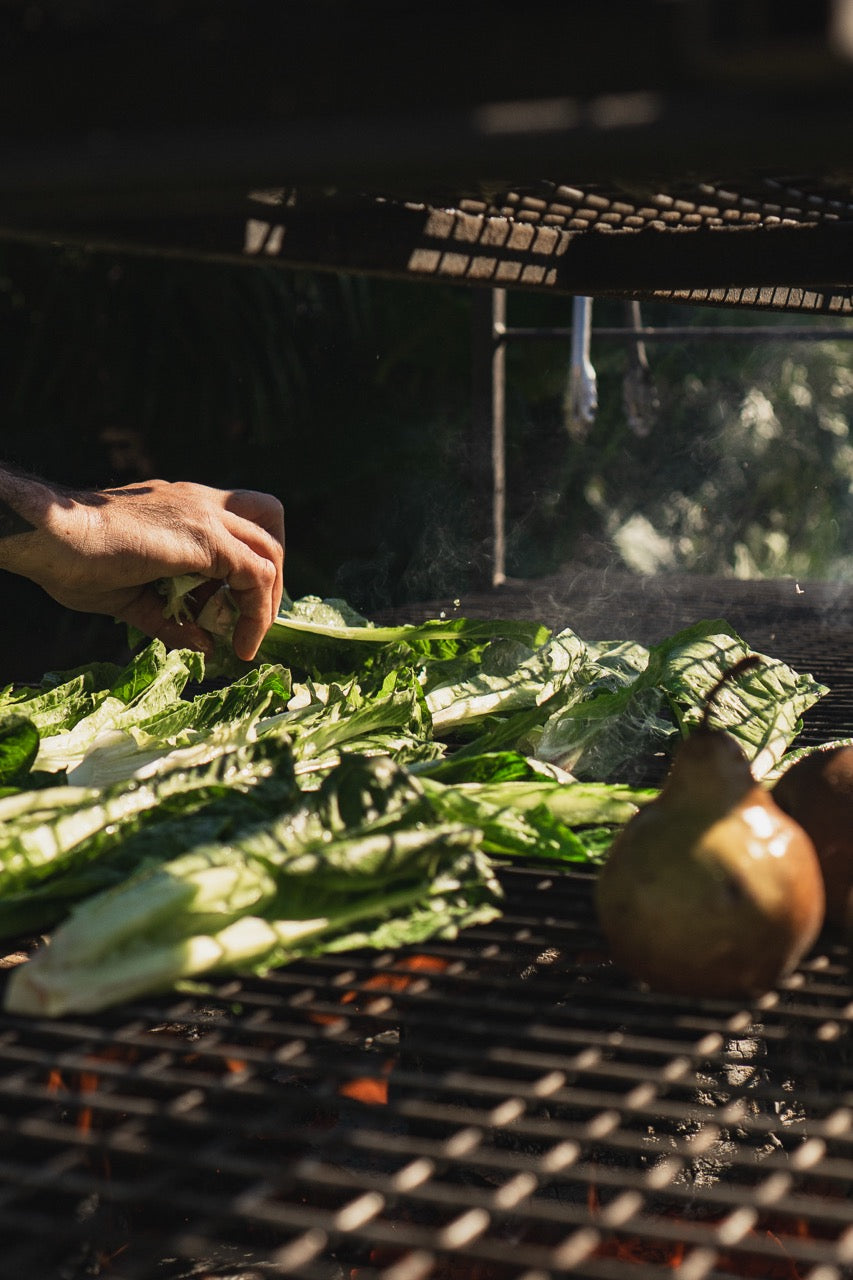TERRA GRILLS ACADEMY
A Word from Our Founder
Charly Pretet — Co-Founder and Internationally acclaimed Pit-Master at Terra Firma Dining.
“The greatest challenge in cooking over fire is not the food itself, but the fire. To truly succeed, you must first learn to understand it; its stages, its moods, and its rhythm. Fire is a living element: fascinating, beautiful, but also unpredictable, always responding to the world around it. The fire needs to be understood and respected, you need to work with it, not against it.
At Terra Grills Academy, this is where we begin—by teaching not just the techniques, but the mindset. Respect for the raw beauty of fire is the foundation of great fire cooking.
Once you tame the flames, something extraordinary happens. Cooking makes sense in a new way. You feel connected to the element, grounded in nature, and inspired by endless possibilities. From the simplest vegetables to the most impressive cuts of meat, everything cooked over fire carries a depth of flavour and experience that no modern appliance can ever replicate.
This is why we created Terra Grills: not just as equipment, but as a tool to help you unlock this primal connection. Whether you’re cooking for your family in the backyard, or hosting a feast for hundreds, our mission is to give you the confidence to trust the fire, to enjoy the process, and to rediscover the timeless joy of cooking with nature’s oldest element.”
🔥 Fire Training Guide
-
1. The Fire Triangle
Fire is created through a chemical reaction between three essential elements:
• Air (Oxygen): Needed to feed combustion.
• Fuel (Wood/Charcoal): Provides energy to burn.
• Heat: The spark or temperature required to ignite the reaction.
Remove any one of these, and the fire will die.
-
2. Stages of Fire
Ignition
The very beginning of a flame. Requires a spark or heat source. Fragile and easily extinguished.
Smoke Stage
As wood begins to catch, it releases gases and smoke. Temperature is still rising. A smoky stage that gives food strong flavor if exposed.
Flame
Fire is fully developed. Produces the hottest temperature. Flames are unstable heat — excellent for searing, but not consistent.
Embers
Wood breaks down into glowing red-hot coals. Ascending phase: heat is at its peak, ideal for cooking. Descending phase: heat begins to fade but still provides steady warmth.
Ashes
When embers cool completely, only ash remains. No usable heat left. Marks the end of the fire’s cooking potential.
-
3. Heat Zones by Hand Test
A traditional way to measure heat is by holding your hand, palm down, above the fire (around grill height or at level of the ingredient hanging above the fire) and counting seconds until the heat becomes uncomfortable:
- 1–2 seconds: 🔥🔥🔥🔥🔥🔥 Very High Heat (perfect for high temp searing, charred)
- 2–3 seconds: 🔥🔥🔥🔥🔥 High Heat (perfect for searing)
- 4–6 seconds: 🔥🔥🔥🔥 Medium-High Heat (roasting, fast grilling)
- 6–8 seconds: 🔥🔥🔥 Medium-Low Heat (gentle roasting, vegetables)
- 10 seconds: 🔥🔥 Low Heat (slow cooking, smoking, delicate items)
- 11–12 seconds: 🔥 Very Low Heat (warming, holding food)
Any slow cooking process involving hanging produce or cooking with our Argentinian Asado Cross or Press require a temperature between 8 to 10 seconds.
-
4. Key Learning Outcomes
Fire must be respected and worked with, not against.
Each stage of fire has a role in cooking — from smoky flavor at ignition to stable embers for roasting.
Understanding heat zones ensures control, precision, and consistency.
Mastery comes from practice: observing how fuel, air, and heat interact.




“Cooking Memories Together.”
- Chef Charly Pretet
